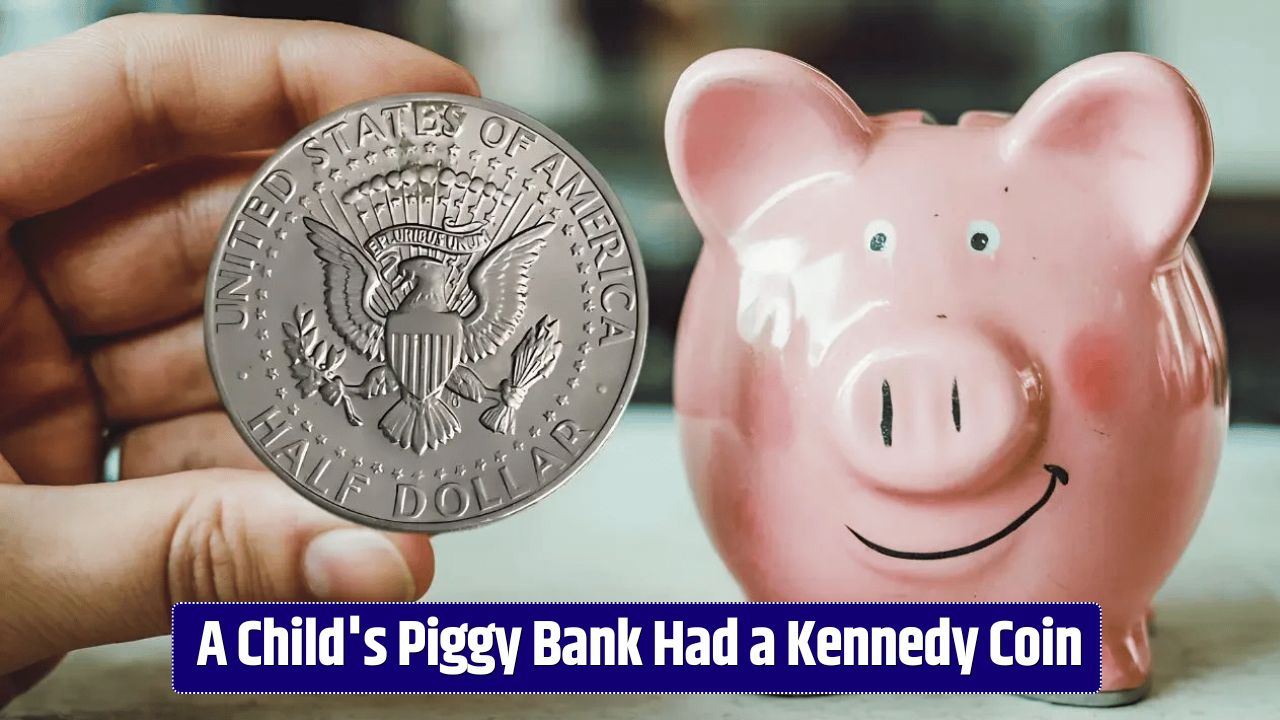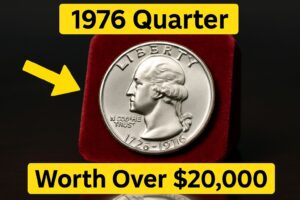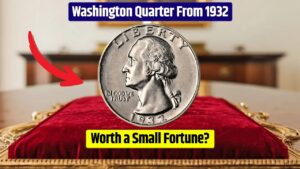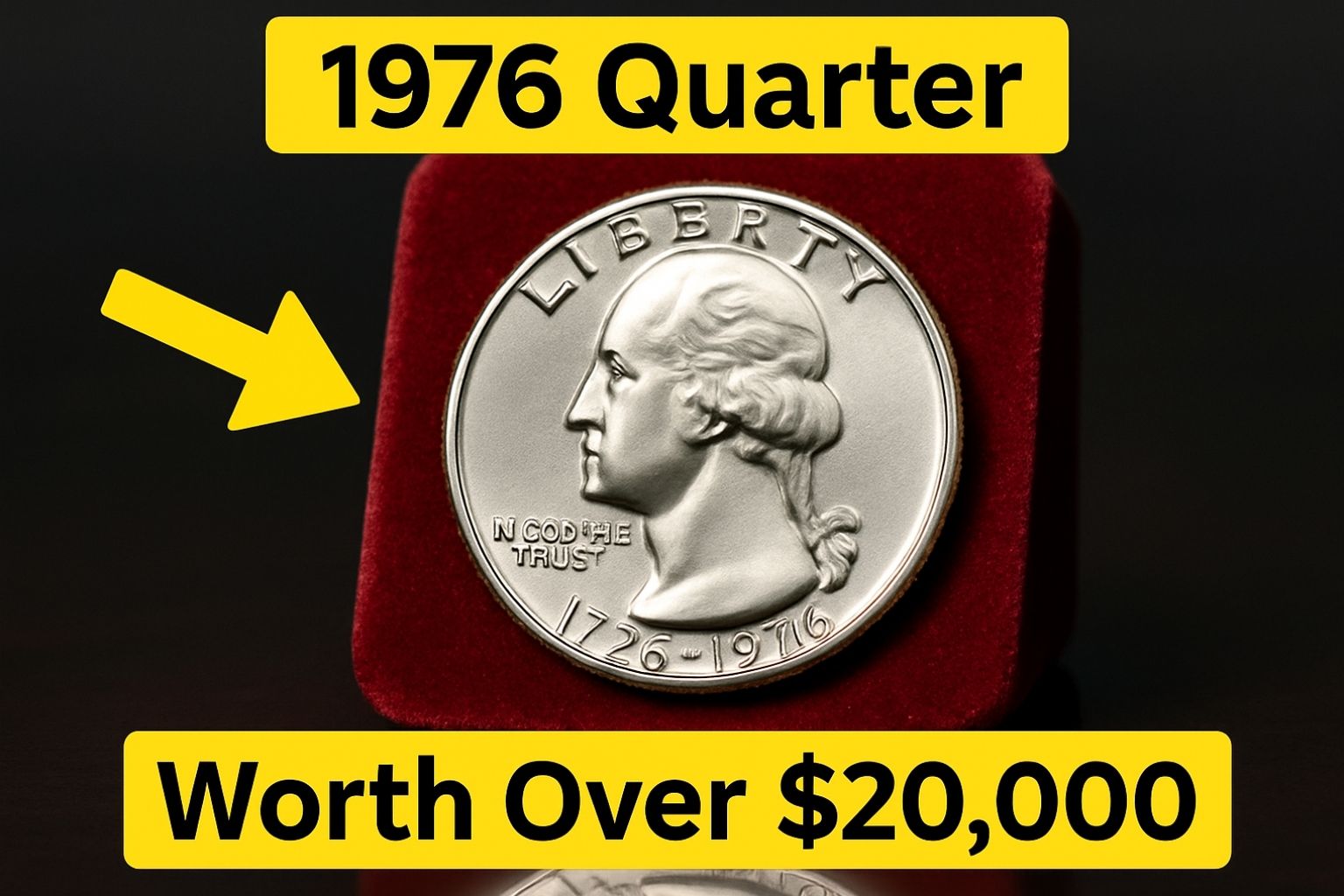It was supposed to be a mundane Sunday. You know the kind—laundry humming in the background, a grocery list half-written on the fridge, and your kid counting pennies like they’re training for the Federal Reserve. But in a small Ohio home, that lazy afternoon flipped into something far more remarkable.
Nine-year-old Ellie Parker was just cleaning out her old piggy bank with her mom, Rachel, probably hoping to scrape together enough for a new toy or maybe some candy. Instead, they stumbled upon something numismatically weird—a Kennedy half-dollar from 1971 that shimmered a little too much.
A coin with a secret.
When Ordinary Ain’t So Ordinary
At first glance, the coin looked like your typical JFK half. Same face, same date. But then… the weight. The shine. That silvery glint that didn’t match the usual dullness of post-1970s halves. Something was off.
And let’s be honest—most of us would’ve shrugged and tossed it back into the coin jar. But not the Parkers. Curious (and maybe a little suspicious), they took it to a local coin shop. And that’s where things got interesting.
The dealer took one look and went quiet. That kind of quiet where you know something big is happening.
A Silver Coin That Shouldn’t Exist
So here’s the thing: The U.S. Mint stopped producing silver Kennedy half-dollars after 1970. The 1964 version was 90% silver. From 1965 to 1970, they dialed it back to 40%. But starting in 1971? Nada. Zilch. The mint switched entirely to a copper-nickel alloy.
Which raises a massive question: What on Earth is a 1971 coin doing with a 90% silver composition?
Experts now believe this could be what’s known as a transitional error—a fluke in minting where a leftover blank (called a planchet) from the previous composition sneaks into the presses. They’re rare. Like, “lottery ticket with a side of comet-sighting” rare.
Here’s a quick breakdown of Kennedy half-dollar compositions:
| Year(s) | Composition |
|---|---|
| 1964 | 90% Silver |
| 1965–1970 | 40% Silver |
| 1971–Present | Copper-Nickel Clad |
If the Parker coin really is struck on a 90% silver planchet from 1970, it’s the only known one of its kind for 1971. That’s not just rare—that’s potentially historic.
What Could It Be Worth?
Right now, nobody’s slapping a price tag on it. The coin’s undergoing authentication, testing, and all the forensic-level scrutiny you’d expect for something that could flip the numismatic world on its head.
But let’s just speculate for a second. Other transitional errors—like the famous 1943 copper penny or 1974 aluminum Lincoln cent—have fetched jaw-dropping prices at auction. Think six figures. Sometimes seven.
If this coin is what experts think it is, we’re not just talking tens of thousands. We’re talking about a potential seven-figure payday.
More Than Just a Coin
But the coolest part? It wasn’t a professional collector or historian who found it. It was a kid. A curious nine-year-old emptying out her piggy bank.
Ellie’s discovery is a gentle reminder that history isn’t just tucked away in museums or dusty archives. Sometimes, it’s hiding in plain sight—wedged between nickels and dimes, waiting for someone to notice.
And if you’re sitting on a jar of old coins right now, admit it—you’re probably thinking about going through them. Slowly. Carefully. Because hey, who knows?
What’s Next for the Silver Stranger?
For now, the Parkers are keeping the coin under lock and key. The piggy bank’s been officially retired (RIP, little plastic unicorn), replaced by a sleek display case.
Authentication could take a while, but if it checks out, this could be one of the most valuable Kennedy halves in existence—and a true outlier in U.S. Mint history.
Not too shabby for an afternoon of cleaning.
FAQs
Could this really be a one-of-a-kind coin?
Yes. As of now, there are no other documented 1971 Kennedy half-dollars struck on a 90% silver planchet.
How do experts test a coin’s composition?
They use a combination of X-ray fluorescence (XRF), weight analysis, and metallurgical studies to determine the metal makeup.
How do transitional errors happen?
Usually during periods of change—like composition shifts or new minting procedures—old blanks may accidentally get mixed in with new batches.
Is it legal to sell such a coin?
Absolutely. As long as it’s authenticated, it can be legally sold or auctioned.
Where can you get coins authenticated?
Top places include the Professional Coin Grading Service (PCGS) and Numismatic Guaranty Company (NGC).









